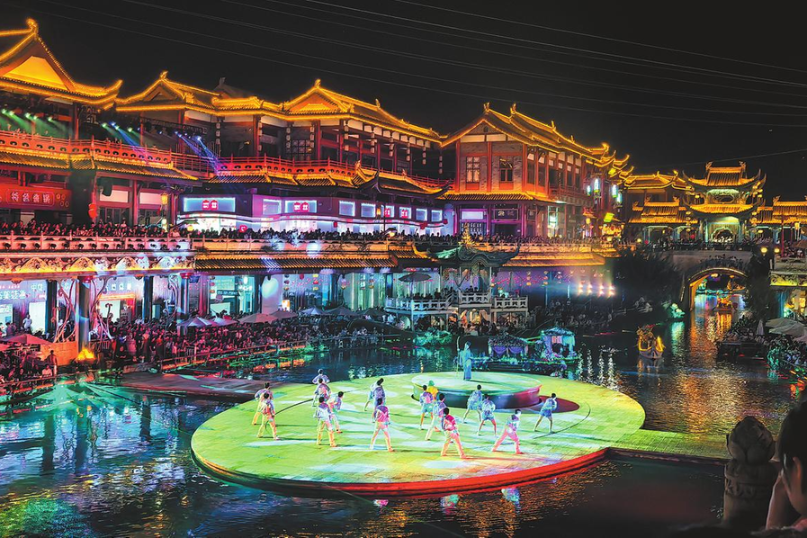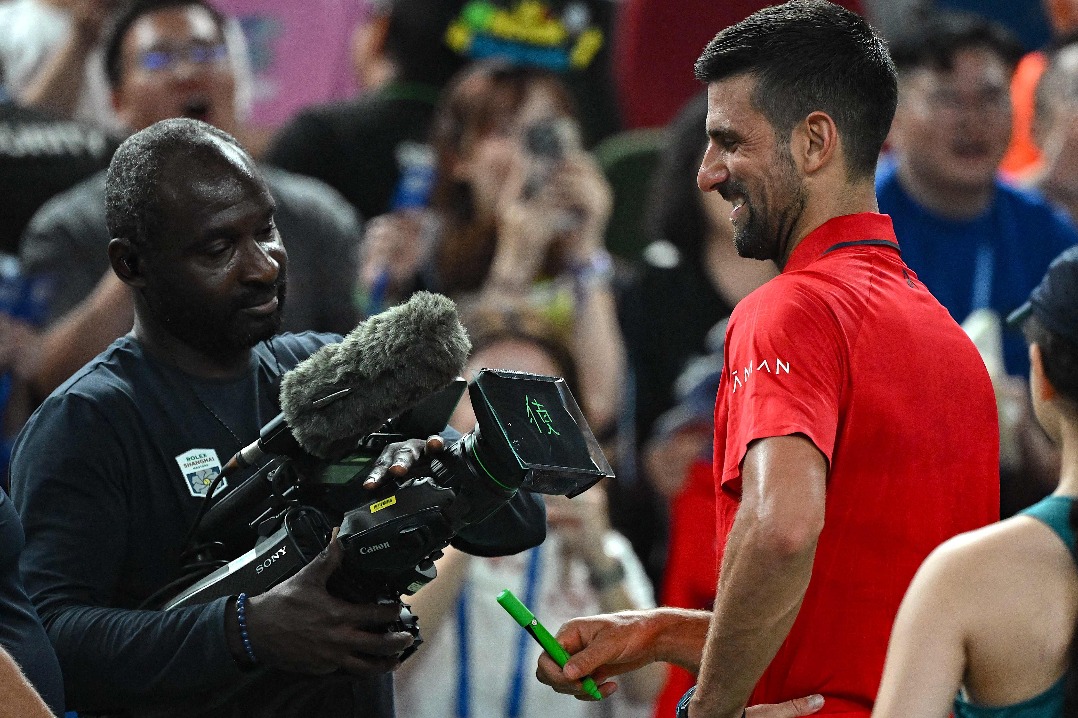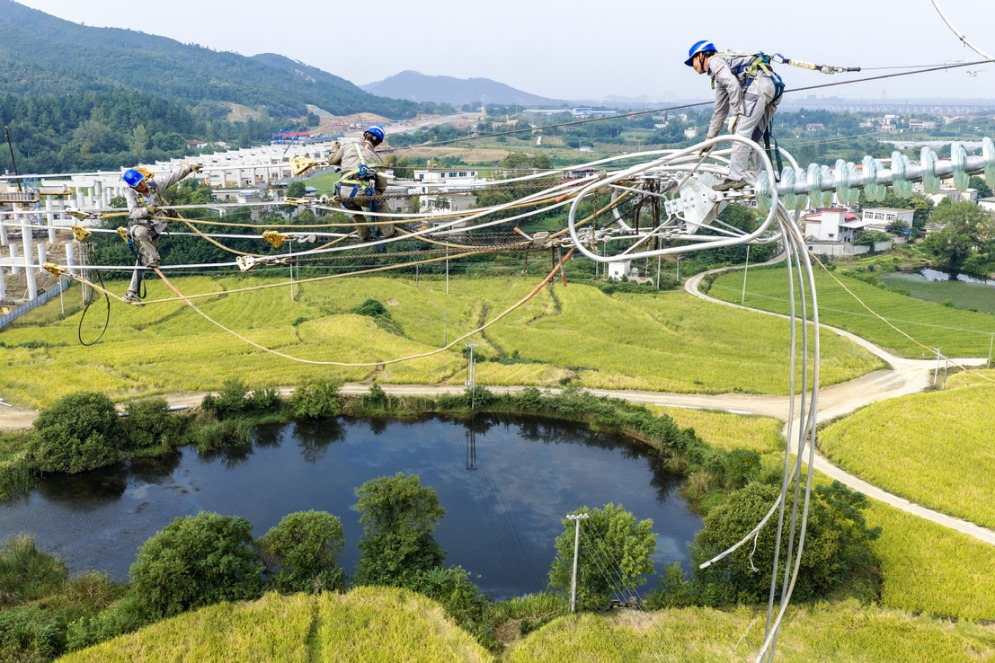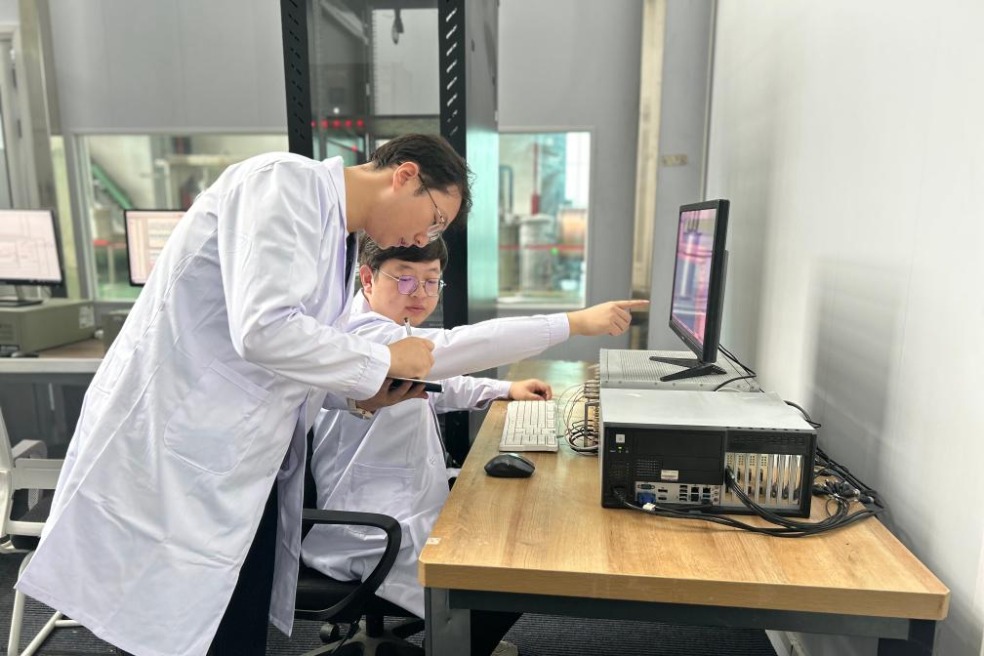Tuning into a hidden heritage
Revival of long-overlooked art songs is a journey into landscape of melody and memory, Chen Nan reports.

When pianist Zhang Jialin, a professor at the Central Conservatory of Music in Beijing, was tasked in 2018 with selecting pieces for the entrance exam for the master's program in vocal accompaniment, he stumbled upon a hidden gem: art songs by the German composer Ellinor Valesby (1894-1969). The pieces were composed using Chinese classical poetry, and immediately piqued Zhang's interest. Known as "lieder" in Germany and "melodie" in French, art song is written for solo voice and piano accompaniment, and blends poetry and music.
One of the pieces, Ripples Sifting Sand: Rain Murmurs From Across the Drape, based on a poem by Li Yu — the last emperor of the Southern Tang Dynasty during the Five Dynasties and Ten Kingdoms period (907-960) — captured Zhang's imagination.
"I played it on the piano and was struck by its beauty," he says. "The melody was graceful, the harmony exquisite, and the overall feeling was so poetic. It had a perfect level of difficulty — not too easy, nor too hard — making it ideal for the exam, and, more importantly, unfamiliar enough to ensure fairness for the candidates."
This discovery led Zhang down a fascinating path of exploration, and as he dove deeper into Valesby's work and the world of early Chinese art songs, he uncovered a musical landscape full of forgotten masterpieces.
On March 8, he and his wife, soprano Gan Lulu, released their new album, Gems From the Past Century — A Selection of Early Chinese Vocal Works. It features not only compositions by Valesby, but also by notable Chinese composers such as Qing Zhu (1893-1959), Zhao Yuanren (1892-1982), and Huang Zi (1904-38). The duo performed tracks from the album at the National Centre for the Performing Arts in Beijing, sharing their rediscovery.
"These songs aren't just academic exercises," Zhang says. "They're an emotional journey into the heart of Chinese musical heritage."
Zhang says that the introduction of Western music and singing techniques to China in the late 19th century marked a turning point in the way Chinese musicians understood the concept of singing. In 1920, Qing Zhu, whose real name was Liao Shangguo, composed The River Runs East, which is widely recognized as China's first art song. From that point, a wealth of compositions began to emerge, blending Western techniques with emotional depth and Chinese musical traditions.
Valesby, who was married to Liao, composed nearly 20 art songs in China between 1929 and 1931. Despite neither speaking nor understanding Chinese, she relied on her husband to help her connect with Chinese poetry, creating work that combined 19th-century European harmonic language with traditional Chinese elements.
"Her compositions were delicate and refined and used intricate techniques, forming a unique style within the early Chinese art song repertoire," Zhang explains. "Sadly, her songs were gradually forgotten, and disappeared from the stage."
Valesby's music is also notable for its approach to chamber music, treating both the piano and the vocal line as equally important. Zhang believes her influence can be seen in the work of composers at music schools in Shanghai, particularly Huang Zi, who features on the album.
As one of China's first generation of fulltime professional composers, Huang's music, set to poems by famous Tang (618-907) and Song (960-1279) dynasty poets, such as Li Bai and Su Shi, reflects the same blending of China and Europe that marks Valesby's work.
Zhang is passionate about bringing these forgotten songs back into the public eye. "It's like creating a bookshelf in the library for Valesby's work — not to force everyone to love them, but to ensure that people know they exist," he says. "Music history needs to honor these pieces for their artistic value. Even if they never become mainstream, they deserve to be preserved."
Zhang and Gan have been touring China since June 2023, performing and promoting the songs. Their concerts have been met with great enthusiasm. "Many people are hearing these pieces for the first time, but they are completely captivated and they let the music take them on a journey," Gan says. "It feels like a shared, almost sacred experience."
As a teacher of vocal music at the Central Academy of Drama in Beijing, Gan reflects on the challenges of performing Chinese art songs. "They are different. The piano doesn't just accompany the voice — it plays an independent role, almost like a second voice. My job is to make sure the relationship between the two is seamless," she says.
In bringing these early Chinese art songs back to life, Zhang and Gan are not just reviving forgotten music — they are reconnecting listeners to a cultural heritage that has long been overlooked.



Today's Top News
- Trump tells Israel to 'stop' bombing after Hamas ceasefire response
- Japan poised to have first female PM after Takaichi victory
- Xi, Bangladeshi president exchange congratulations on 50th anniversary of ties
- China and 27 countries oppose unilateral coercive measures at UN
- Hong Kong profits from Golden Week travel rush
- Nation's role as steadying global force highlighted






























